Innovative Ideas on Preventing and Treating Kidney Stones
By Matt Windsor
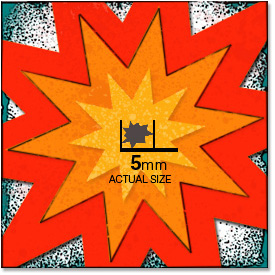 Kidney stones form when calcium, oxalate, and other substances build up in the urine. When stones exceed five millimeters in size, they can get stuck between the kidneys and bladder, bringing intense pain. The Southern diet and climate help explain why the Southeast is the "Stone Belt of America," says UAB researcher Dean Assimos. The pain has been described as a knife in the back, a body blow, and “the closest thing a man will come to experiencing childbirth.” Whatever the analogy, kidney stones are enormously painful. They often leave victims writhing on the ground.
Kidney stones form when calcium, oxalate, and other substances build up in the urine. When stones exceed five millimeters in size, they can get stuck between the kidneys and bladder, bringing intense pain. The Southern diet and climate help explain why the Southeast is the "Stone Belt of America," says UAB researcher Dean Assimos. The pain has been described as a knife in the back, a body blow, and “the closest thing a man will come to experiencing childbirth.” Whatever the analogy, kidney stones are enormously painful. They often leave victims writhing on the ground.
“They can be excruciating,” says Dean Assimos, M.D., the new chair of the UAB Department of Urology. He speaks from personal experience, having survived two stones himself. And if you live in the South, you’re more likely to know just what he’s talking about.
“The Southeast is the Stone Belt of America,” says Assimos, an internationally renowned expert who specializes in the removal of large stones and preventive measures to avert stone formation. His research group is currently investigating the preventive powers of fish oil supplements and a common gut bacterium. The investigators are also trying to unravel the reasons why stones develop in the first place.
Diet, the hot climate, and genetic factors may be the driving forces behind the high levels of stone formation in the South, Assimos explains. (See "Preventing Stones.") “However, the prevalence of kidney stone formation is also increasing across the country,” he says.
The number of Americans with kidney stones has almost doubled since 1994, according to a study presented at the American Urological Association meeting in May 2012. Researchers speculate that rising obesity rates are a key factor. Whatever the cause, more cases of kidney stones create a burden on the medical system, Assimos says, because treating them usually results in significant health-care expenditures.
What’s Inside
Kidney stones are typically made up of calcium and oxalate, or calcium and phosphate. Oxalate is a substance produced naturally by the body and also consumed in plant-based food, such as spinach and peanuts. Other stone types include uric acid, cysteine, and magnesium ammonium phosphate.
Treating Kidney StonesThere are many ways to remove kidney stones—from medications to high-tech treatments such as shock-wave lithotripsy and robotic surgery. These advances mean patients today—even those with large stones—rarely need open surgery. |
“When urine is full of the stone-composing chemicals, crystals of these substances develop, aggregate, or stick together and grow,” Assimos says. “An analogy is the aggregation of simple crystals of water—snowflakes—into a snowball.”
Stone formation is a complex process influenced by events occurring in the kidneys, the gastrointestinal tract, bones, and the endocrine or gland system. Stones can enlarge and migrate from the kidney, where they form, into the ureter, the tubular structure that transports urine from the kidney to the bladder. This can result in obstruction of urine flow, which is thought to be the source of pain, rather than the stone itself.
Dietary risk factors for kidney stone formation include not consuming enough fluid; increased consumption of salt, animal protein, and high oxalate-containing foods (all prevalent in the Southern diet); and inadequate dairy product intake. Assimos and his research group have developed a Web-based program to facilitate patient compliance with dietary modifications to prevent kidney stone formation.
|
In one current study, Assimos and colleagues are investigating whether fish oil supplements can suppress oxalate synthesis and decrease stone formation. They’re also studying a common gut bacterium called Oxalobacter formigenes. |
A family history of kidney stones increases a person’s risk, but the best predictor of stone trouble is simply this: having stones. “If you form one stone, there’s a 50 percent chance that you’ll have another one within 10 years,” says Assimos.
Oxalate + Calcium = Bad News
Assimos’s research focuses on oxalate; up to 80 percent of stones are caused by the combination of calcium and oxalate. People who have trouble with recurring stones are encouraged to avoid high-oxalate foods—including spinach, peanuts, okra, chocolate, and sweet potatoes—and to consume the normal amount of calcium in their diet.
Assimos and colleagues Ross Holmes, M.D., and John Knight, M.D., who came with him to UAB from Wake Forest University, are looking forward to building new research collaborations in Birmingham.
In one current study, Assimos and colleagues are investigating whether fish oil supplements can suppress oxalate synthesis and decrease stone formation. They’re also studying a common gut bacterium called Oxalobacter formigenes. People who have the bacterium in their colons are at lower risk for kidney stones, especially if they have a low-calcium diet. “We’re trying to determine whether we can recolonize people who had the bacterium in their guts at one time, but lost it due to antibiotic therapy,” Assimos says. They have administered the bacterium to humans and initial results show that re-colonization can be successfully achieved.
The researchers are also investigating the body’s own oxalate synthesis in the hopes of finding key steps in the pathway that could lead to new treatments.
Preventing StonesKidney stones are caused by a complex mix of genetic, environmental, and dietary factors, but there are several ways you can reduce your risk, says UAB urologist and kidney stone expert Dean Assimos, M.D. |
|
|
1. Drink plenty of water. Dehydration is a key risk factor for stones. Drink at least six to eight glasses of fluid a day—and more when you are exposed to extreme heat. |
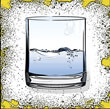 |
|
2. Get calcium from food sources. Even though most stones are caused by excess calcium in the urine, calcium consumption is a good thing. Research shows that dietary calcium binds to oxalate, limiting its absorption from the gastrointestinal tract and delivery to the kidney. But calcium supplements don’t offer the same benefits; in fact, they appear to increase stone risk. Try to eat one serving of dairy products with each meal, Assimos says. |
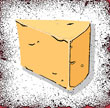 |
|
3. Eat less animal protein and salt. Animal protein and salt (sodium) boost calcium excretion in urine, increasing the risk of forming calcium-containing kidney stones. |
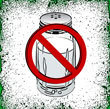 |
|
4. Stock up on citrus. Citric acid, found in oranges and other citrus fruits, inhibits some of the crystallization processes involved in stone formation; eating citrus may reduce stone formation. Assimos says that dietary modifications to prevent kidney stone formation are based on consuming a healthy diet. |
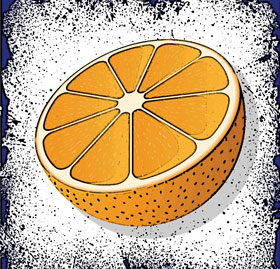 |